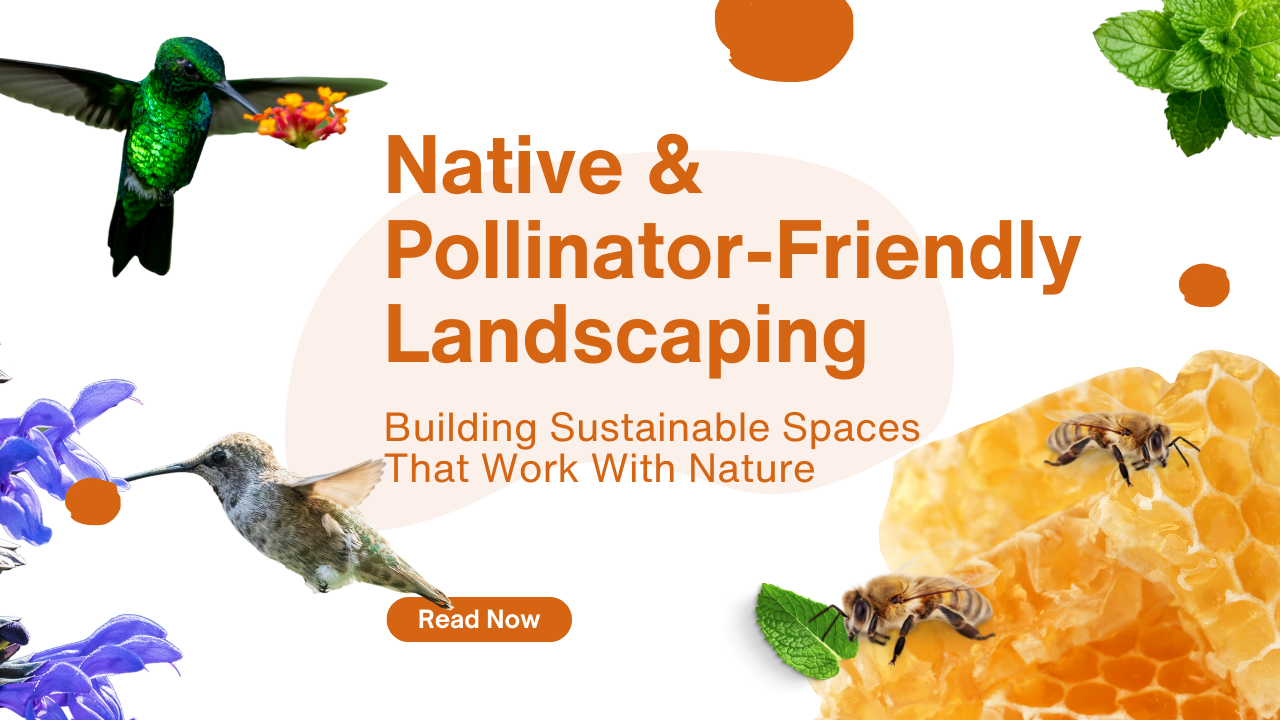Blog Post
-
Native & Pollinator-Friendly Landscaping: Building Sustainable Spaces That Work With Nature
June 11, 2025

Introduction
In the evolving world of landscape design, a growing number of homeowners and contractors are embracing the benefits of native and pollinator-friendly landscaping. This trend is more than just an aesthetic choice—it's a movement toward sustainability, biodiversity, and low-maintenance outdoor environments. Native plants and pollinator gardens provide habitat for beneficial insects and wildlife, reduce water consumption, and thrive without the need for excessive fertilizers or pesticides.
By integrating smart design practices with tools like landscape design software, irrigation design software, and Pro Contractor Studio, professionals can plan and implement landscapes that are not only beautiful but also environmentally responsible.
1. Why Native Plants Are a Game Changer
Native plants are species that have evolved in a specific region over thousands of years. They’re perfectly adapted to local climate, soil, and rainfall conditions. This makes them:
- Highly resilient and drought-tolerant
- Naturally resistant to pests and diseases
- Easy to maintain once established
Using landscaping software and site plan software, professionals can visualize how native plants will integrate into the overall design—layering textures, colors, and seasonal interest without high maintenance demands.
2. Pollinator Gardens: A Biodiversity Boost
Pollinator gardens are designed specifically to attract bees, butterflies, birds, and other essential pollinators. With declining insect populations globally, these gardens serve a vital ecological role.
When paired with landscape irrigation design software, pollinator gardens can be zoned for optimal water use, ensuring nectar-rich flowers are supported without waste. Incorporating lawn irrigation design tools and sprinkler design software allows for:
- Drip irrigation near root zones
- Avoiding overspray on delicate flower heads
- Smart watering schedules based on seasonal bloom cycles
3. The Water Efficiency Advantage
One of the major benefits of native and pollinator-friendly landscaping is reduced water usage. By choosing plants adapted to local rainfall and minimizing turf areas, you naturally lower the demand on irrigation systems.
Using irrigation software like Pro Contractor Studio, designers can create efficient irrigation zones tailored to native plant groupings. This strategic approach supports long-term conservation while meeting aesthetic goals.
4. Creating Functional, Naturalistic Designs
Gone are the days of highly manicured, uniform lawns. Today’s designs lean into organic, flowing lines and natural textures. Native plants allow you to create:
- Butterfly and bee corridors
- Rain gardens and bioswales
- Meadows and shaded understory areas
With best landscape design software, you can preview how these elements will interact spatially, adjust for sun exposure, and build in drainage solutions using drainage design software.
5. Contractor Benefits: Sustainable Landscapes, Satisfied Clients
For contractors, offering pollinator-friendly and native designs means:
- Reduced installation and maintenance costs
- Higher long-term client satisfaction
- A niche reputation for sustainable practices
With integrated tools like irrigation design software and sprinkler design tools, contractors can deliver accurate project proposals, detailed watering plans, and scalable designs for residential and commercial properties.
6. Compliance, Rebates, and Eco-Certifications
Many municipalities now offer rebates and incentives for homeowners who convert turf into native landscapes. In some regions, these gardens may also qualify for eco-certifications.
Using site plan software and pro contractor studio, professionals can prepare detailed layouts and documentation needed for approval—speeding up the process and increasing client confidence.
Conclusion
Native and pollinator-friendly landscaping is more than a trend—it’s a smart, sustainable choice that benefits homeowners, contractors, and the environment. With the right design tools and irrigation strategies, these landscapes are easy to plan, beautiful to look at, and powerful in their ecological impact.
Tools like Pro Contractor Studio, landscape design software, and irrigation design software empower professionals to lead this green revolution—one pollinator at a time.